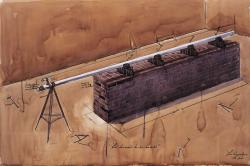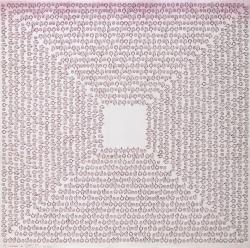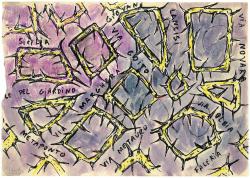The union of art and life is the theme with which Marta Minujín identifies, from the 1960s up to the present.
The work of Marta Minujín has been characterized, since the 1960s, by its immediate public effect. Educated in the fine arts schools of Buenos Aires, she traveled to Paris on a grant in 1960. There she rapidly established contact with the most dynamic sectors of the artistic scene. At that time she was making large structures from cardboard, covered with dark automotive paint. She returned to Paris in 1963 and began to work with discarded mattresses that she collected from Paris hospitals. Before she returned to Buenos Aires, she gathered her artistic productions at a wasteland in the Impasse Ronsin, and on Thursday, June 6, 1963, at 4 p.m., invited a group of artists (Christo, Élie-Charles Flamand, Lourdes Castro, Mariano Hernandez, and Paul-Armand Gette) to join her in the fiery destruction of her paintings and mattresses: “Why would I save my work? … so that it could go to die in the cultural cemeteries; eternity does not interest me, I wanted to live and make live.”1 1 Marta Minujín, “Destrucción de mis obras en el Impasse Ronsin-París” (Destruction of my works at Impasse Ronsin-Paris), mimeograph, Marta Minujín archive. (Translated by Noel Smith) This was Marta Minujín’s first happening, the first time she organized a work in a public space using others (in this case the artists) to participate in the realization of her own creative process. As she indicated, her idea was “to create by destroying, to burn my identity.”2 2 Idem.
This participatory perspective impelled all of her artwork, from the mattresses at the Instituto Torcuato Di Tella in Buenos Aires in 1964 (Revuélquese y viva; Roll Around and Live), which received the national prize from a jury that included Pierre Restany and Clement Greenberg, to the performance in which she threw 500 live chickens from a helicopter into the Estadio del Cerro in Montevideo, to La menesunda, a key work of the sixties, which she created with Rubén Santantonín and which became the pop culture icon of Buenos Aires. Increasingly, Marta Minujín involved publics unconnected to the world of art, from the people who waited several hours to enter La menesunda, to the urban masses participating in her shows.
In 1966 she was awarded a Guggenheim grant and she traveled to New York. As in Paris, she became part of the artistic avant-garde. There she presented participatory works such as El batacazo (The Long Shot, Bianchini Gallery, 1966), an installation with a toboggan, flies and rabbits, which she had made the year before at the Instituto Torcuato Di Tella, and Minuphone (Howard Wise Gallery, 1967), a telephone booth that emitted different perceptual effects according to the number dialed (light, smoke, mist, etc.).
In the late 1970s, Marta Minujín started to work with emblematic images of the city of Buenos Aires and with universal icons. In the 1978 São Paulo Biennial she showed the Obelisco acostado (Resting Obelisk), and in 1979 the Obelisco con pan dulce (The Panettone Obelisk) during the Feria de las Naciones in Buenos Aires. From that point on, Minujín started exploring the complex network of relations between art, public, participation, food, celebration, and distribution. Her projects and productions restore the sense of excess in pagan celebrations, doing so through the construction and deconstruction of cultural icons, as, for example, in Torre de James Joyce de pan (The James Joyce Tower in Bread, 1980) at Dublin University, Carlos Gardel de fuego (Carlos Gardel of Fire, 1981) in Medellin, the Venus de queso (Venus of Cheese, 1981) in Buenos Aires, and the Partenón de libros (Parthenon of Books, 1983), built on the Avenida 9 de Julio, also in Buenos Aires, in a space charged with history—massive demonstrations were staged on this avenue, such as when Eva Perón renounced the candidacy for vice president in an electoral process presided over by Juan Domingo Perón.
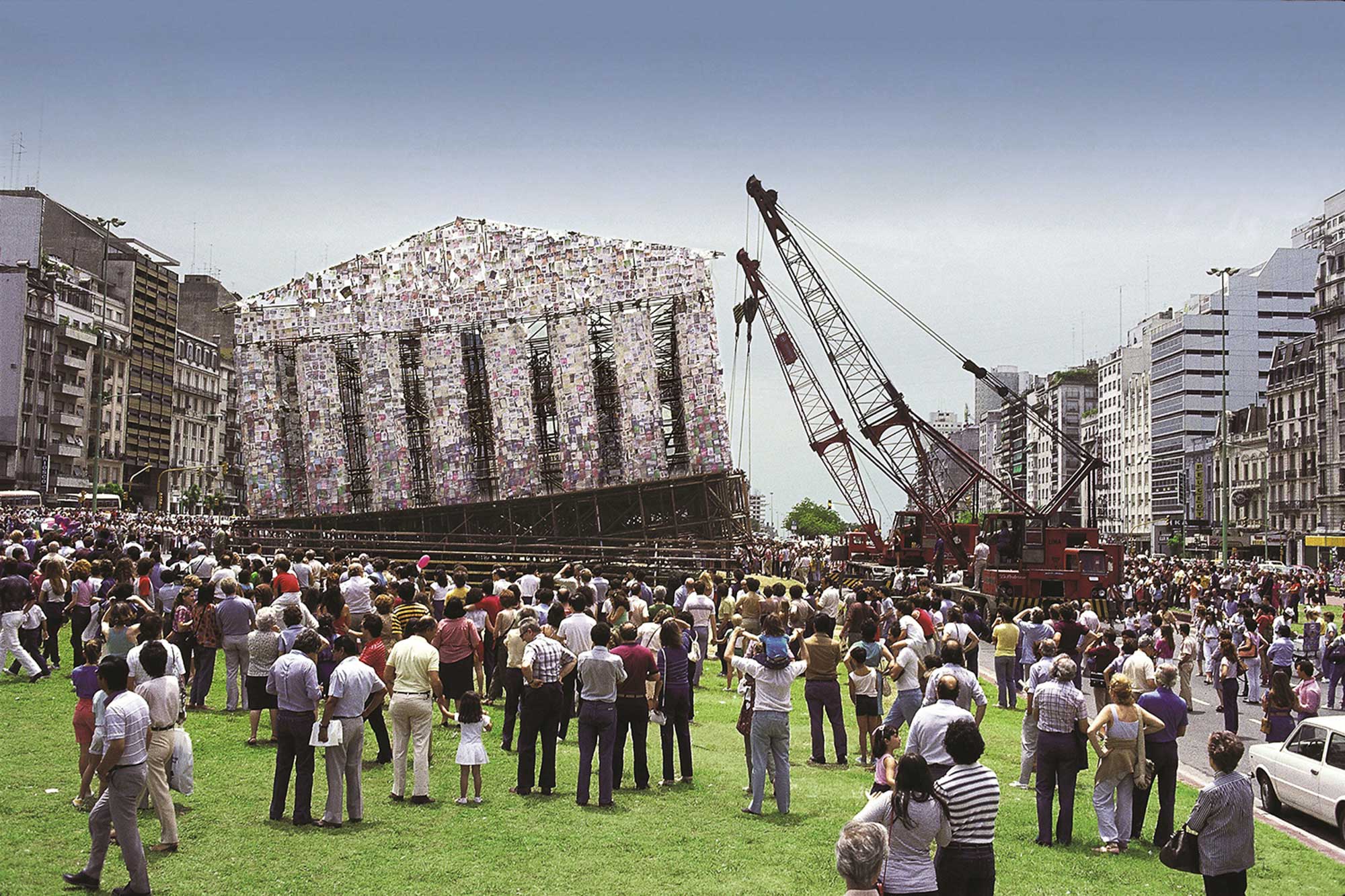
The Partenón de libros was not only marginally charged with political meaning: Minujín created it in 1983, the year of the restoration of democracy after Argentina’s most violent dictatorship. This immense structure filled with books that were distributed to the public represented the restoration of the book and of the culture, which had been subject to prohibition, burning and destruction during the prior years.
All of these participatory works involved the act of reactivating urban and cultural myths. Some of them very much symbolized the urban culture of Buenos Aires (like the Obelisk or Carlos Gardel), and others were international in scope (like the Parthenon or the Venus). In all of these experiences, the objective was to appropriate the myth through collective action.
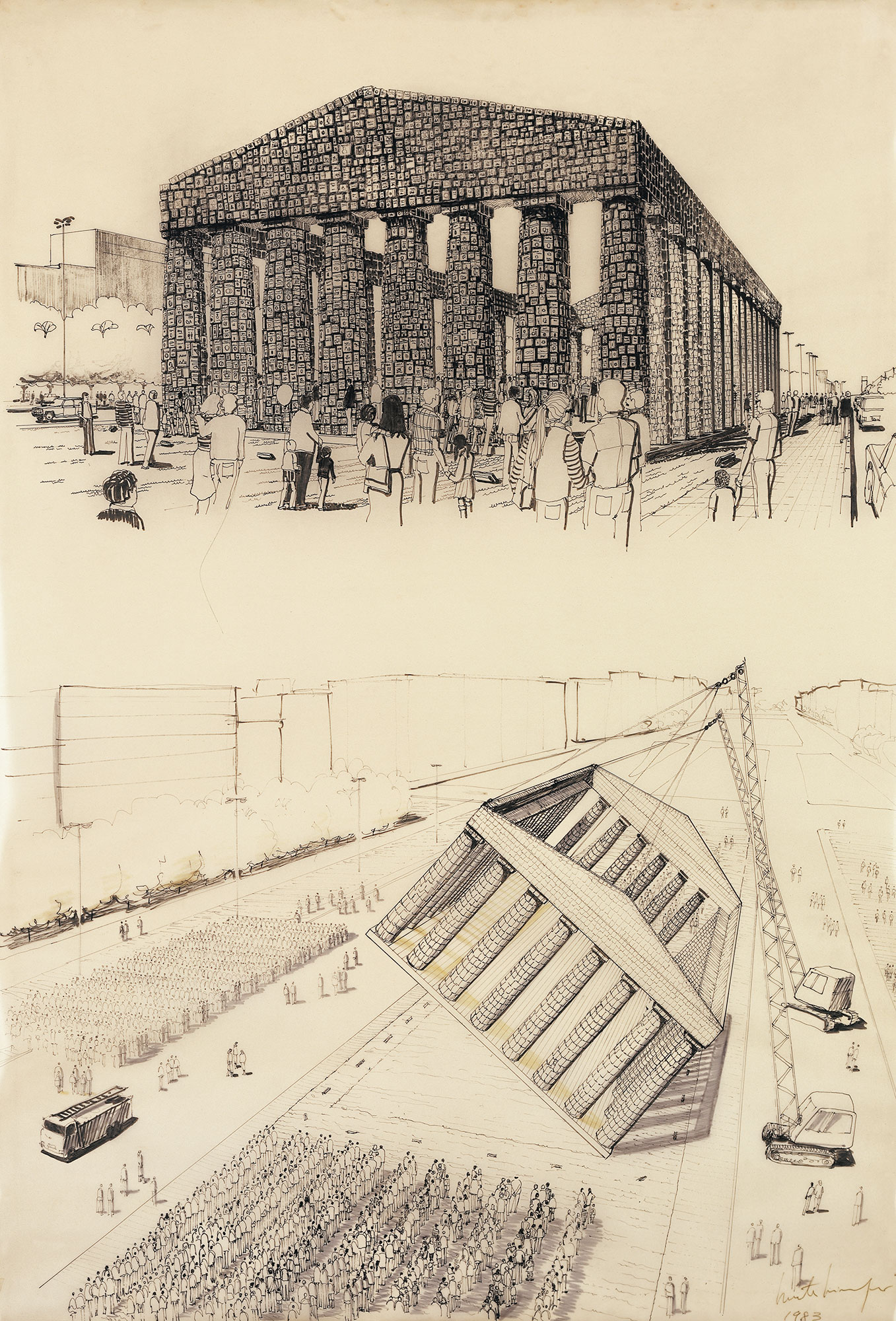
The drawings in the Daros Latinamerica Collection comprise a register and an album of notes on a series of projects. Partenón de libros (1983) records the moment of the construction and erection of the structure that later would hold the books, around which is congregated the public during its exhibition.
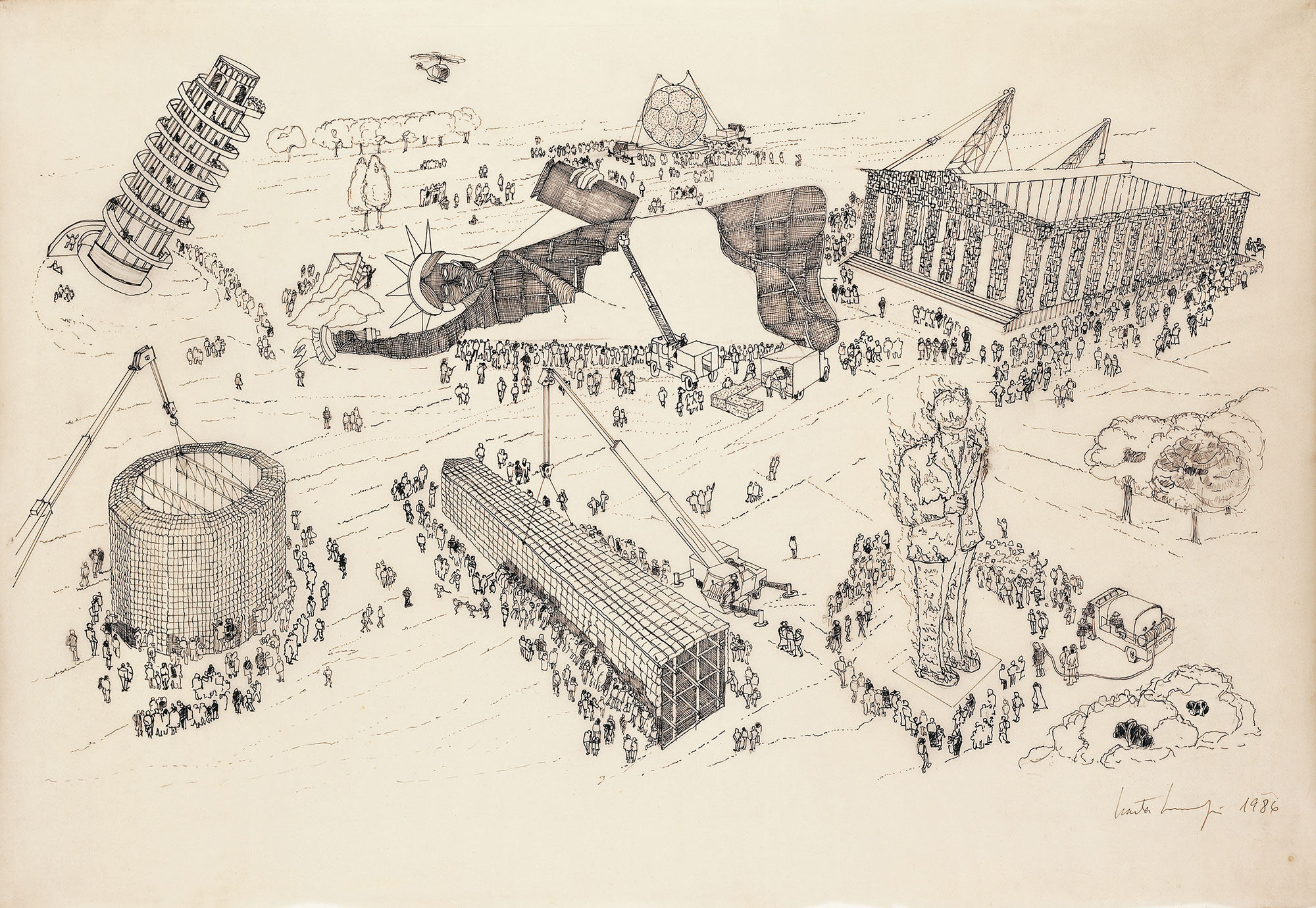
Mitos populares desmitificándose (Popular Myths Being Demythologized, 1986) gathers all the public projects in the form of a theme park. The scene is viewed from above and the public circulates around the “popular myths” in which they can choose to participate.
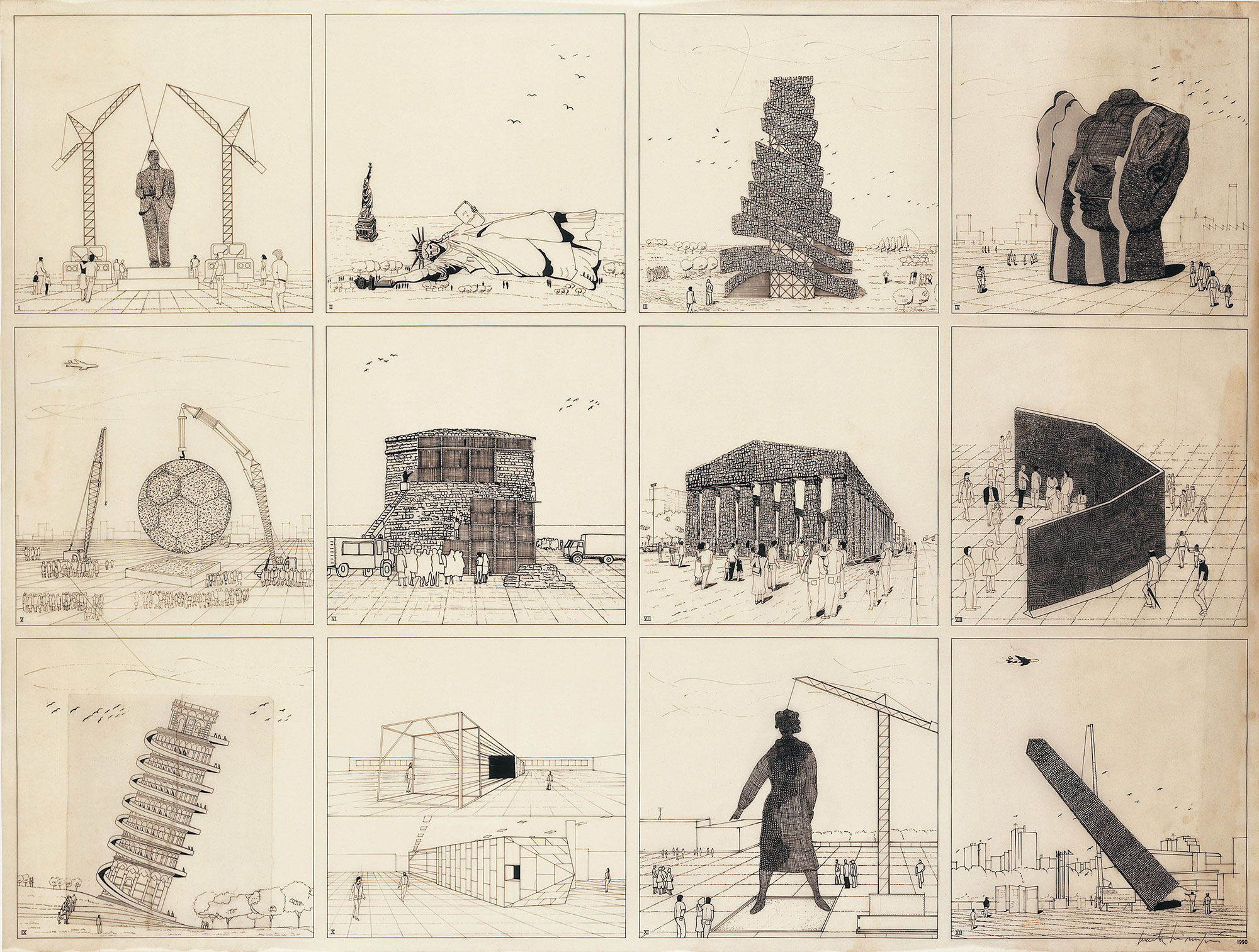
La desmitificación y remitificación de los mitos populares (The Demythologization and Remythologization of Popular Myths, 1990) isolates the design of each project in a small box, much like a comic strip or the story of each of the projects, in which a great myth was shattered, or better yet, became alive through the participation of the public. The union of art and life is the theme with which Marta Minujín identifies, from the 1960s up to the present.
Andrea Giunta, 2017 (2010) Andrea Giunta is Professor of Latin American Art at the University of Buenos Aires, Argentina. This essay was first published in: Al calor del pensamiento. Works from the Daros Latinamerica Collection, exhibition catalogue, Madrid, Fundación Banco Santander, 2010.
(Translated by Noel Smith)

